Multiplication of sweet potatoes with saponin content from Ngoc Linh ginseng
(QNO) - To enhance the value of agricultural products, Nguyen Thi Hong Sanh from Tan Thanh ward (Tam Ky city) has joined a research team to introduce saponins from Ngoc Linh ginseng in Nam Tra My into sweet potatoes. She has also successfully multiple this type of sweet potatoes in many areas in Quang Nam.
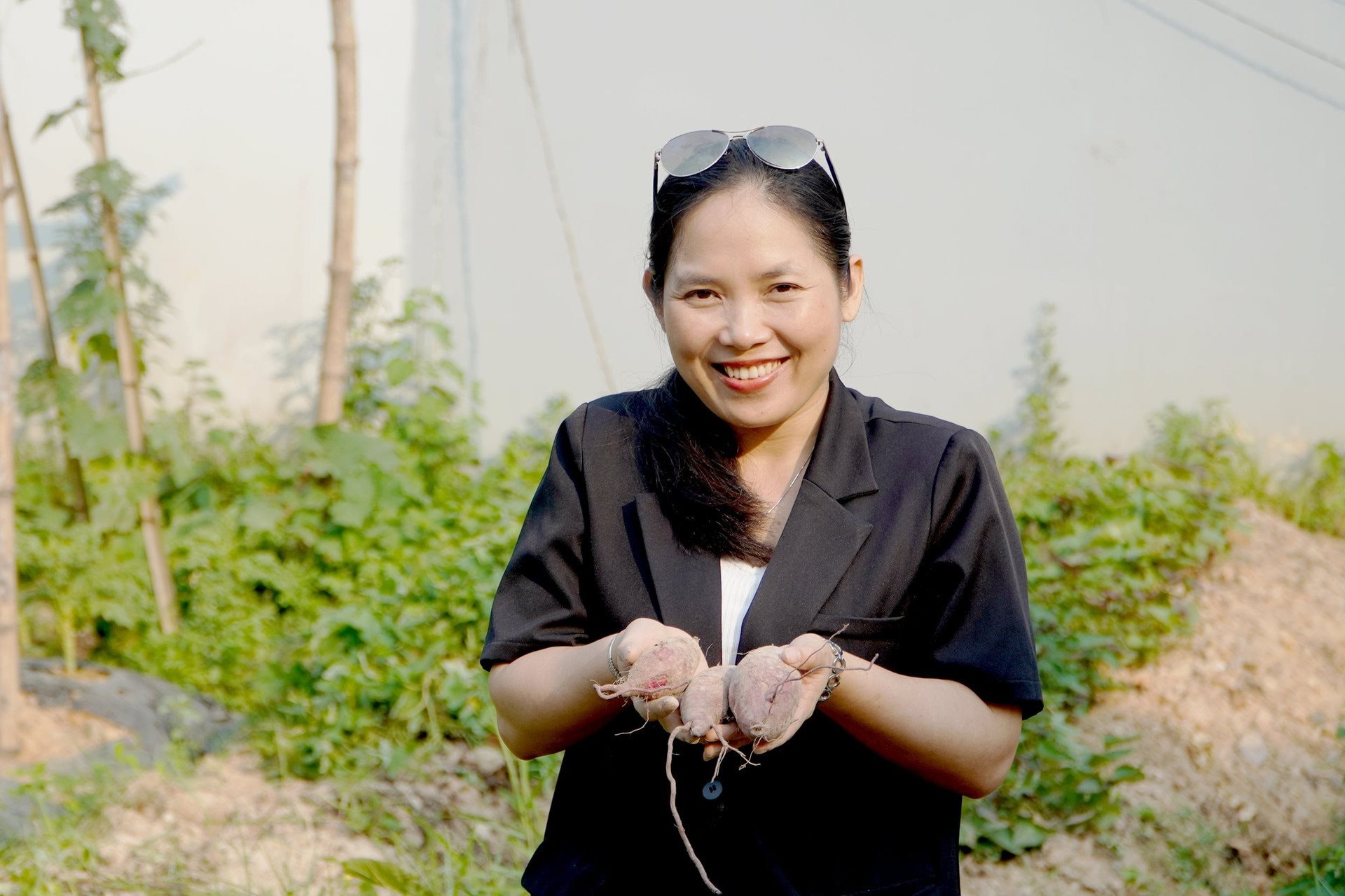
Despite having a doctorate in linguistics and working at Quang Nam University, Nguyen Thi Hong Sanh has a passion for entrepreneurship.
As the owner of a high-quality creche facility, she is passionate about using organic farming products to improve the safety and nutritional value of kids' meals.
Fortunately, Sanh had a chance to meet a group of biologists and traditional medicine doctors studying organic agricultural products.
At that time, they were experimenting with introducing the saponin compound into sweet potatoes. Sanh joined the group and has taken part in planting, research, and model expansion in the community.
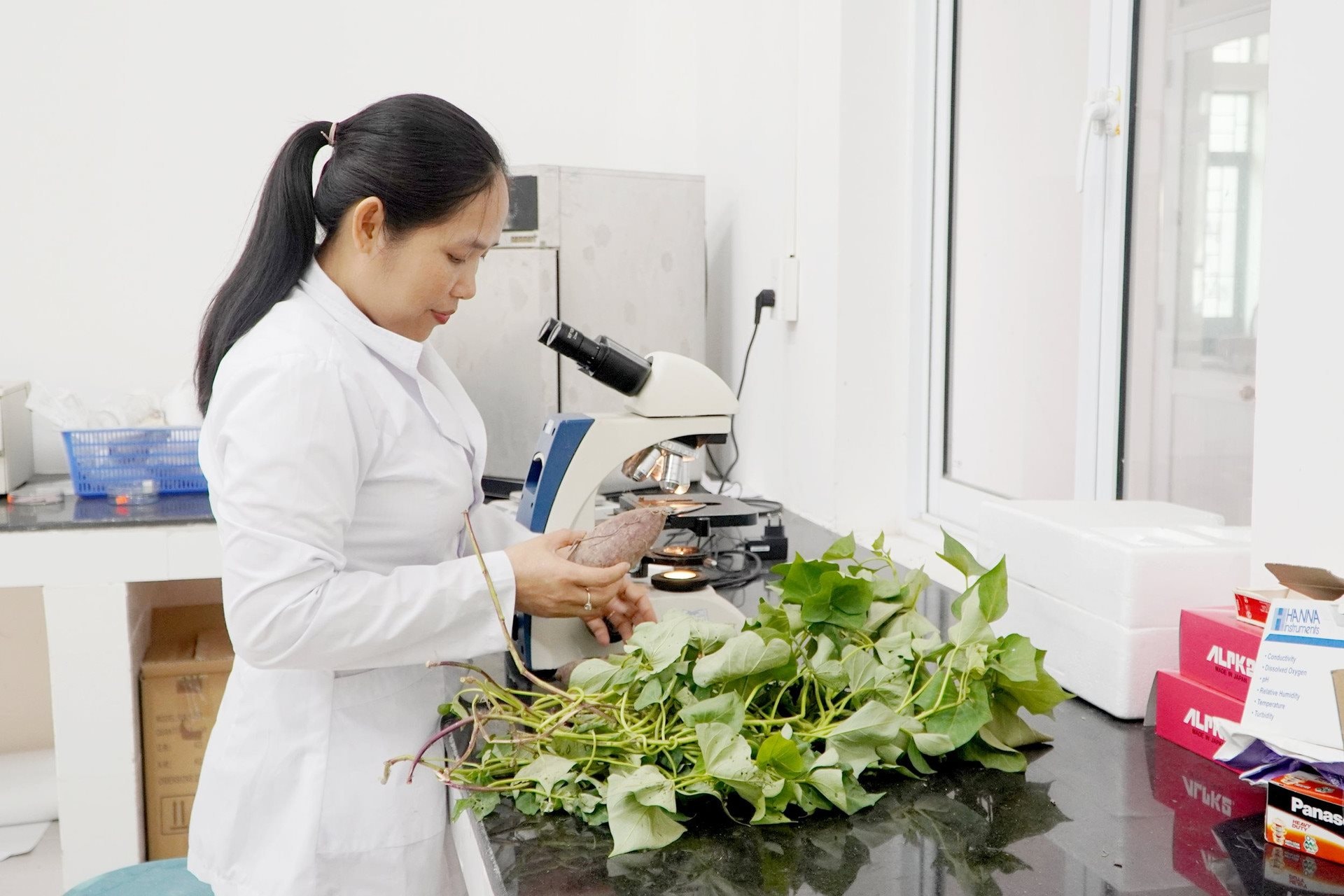
Sanh has been planting the sweet potato varieties provided by the research group in the Tien Phuoc district since September 2023.
Two months later, she planted them in Tan Thanh ward and Tam Thanh commune (Tam Ky city). At the end of 2023, she continued to plant these sweet potato varieties in Nam Tra My district.
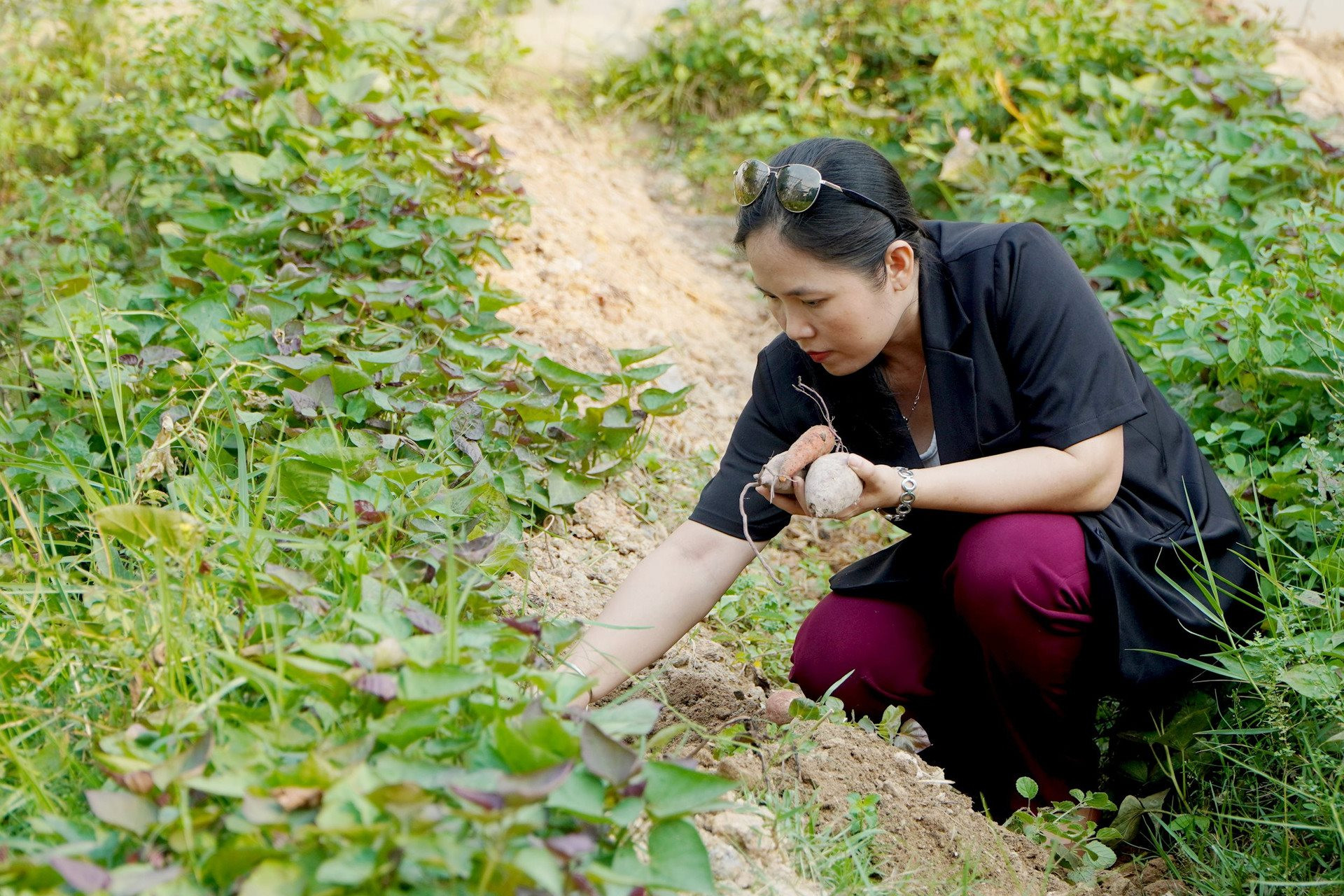
According to Sanh, the saponin content of sweet potatoes varies depending on the cultivation methods and soil conditions.
For example, the saponin level of the yellow sweet potato tubers grown in Hoi An is 1.34%, while the saponin content of the vines reaches 1.79%. Another example is the 1.34% saponin content of the white sweet potato tubers in Da Nang's Hoa Vang area.
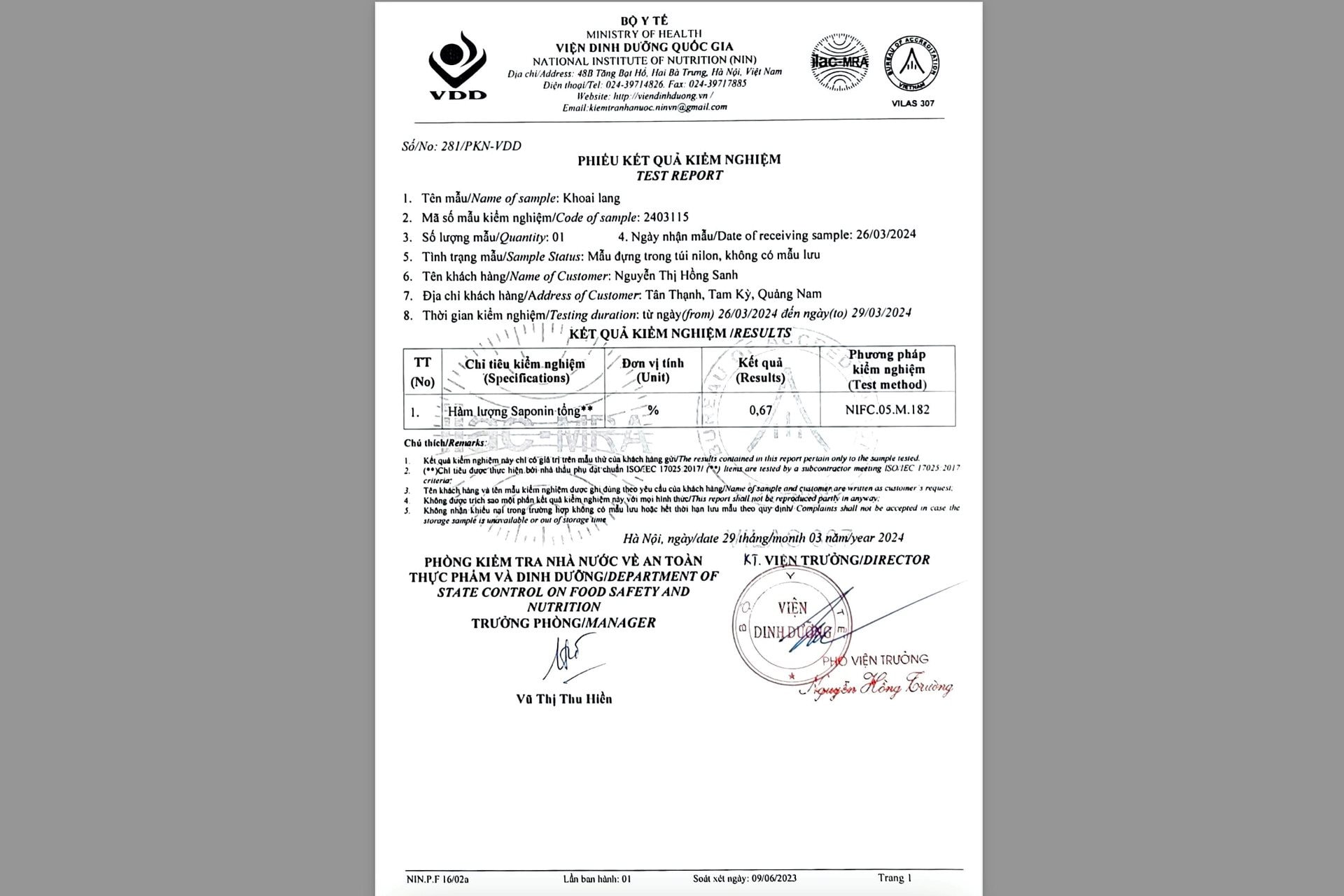
According to Sanh, for sweet potato varieties that contain saponin, it's imperative to apply the proper planting techniques in addition to selecting soil that meets the necessary parameters.
Because the saponin molecule cannot form in the presence of chemicals, farmers must closely adhere to organic farming practices and refrain from using chemical fertilisers or pesticides.
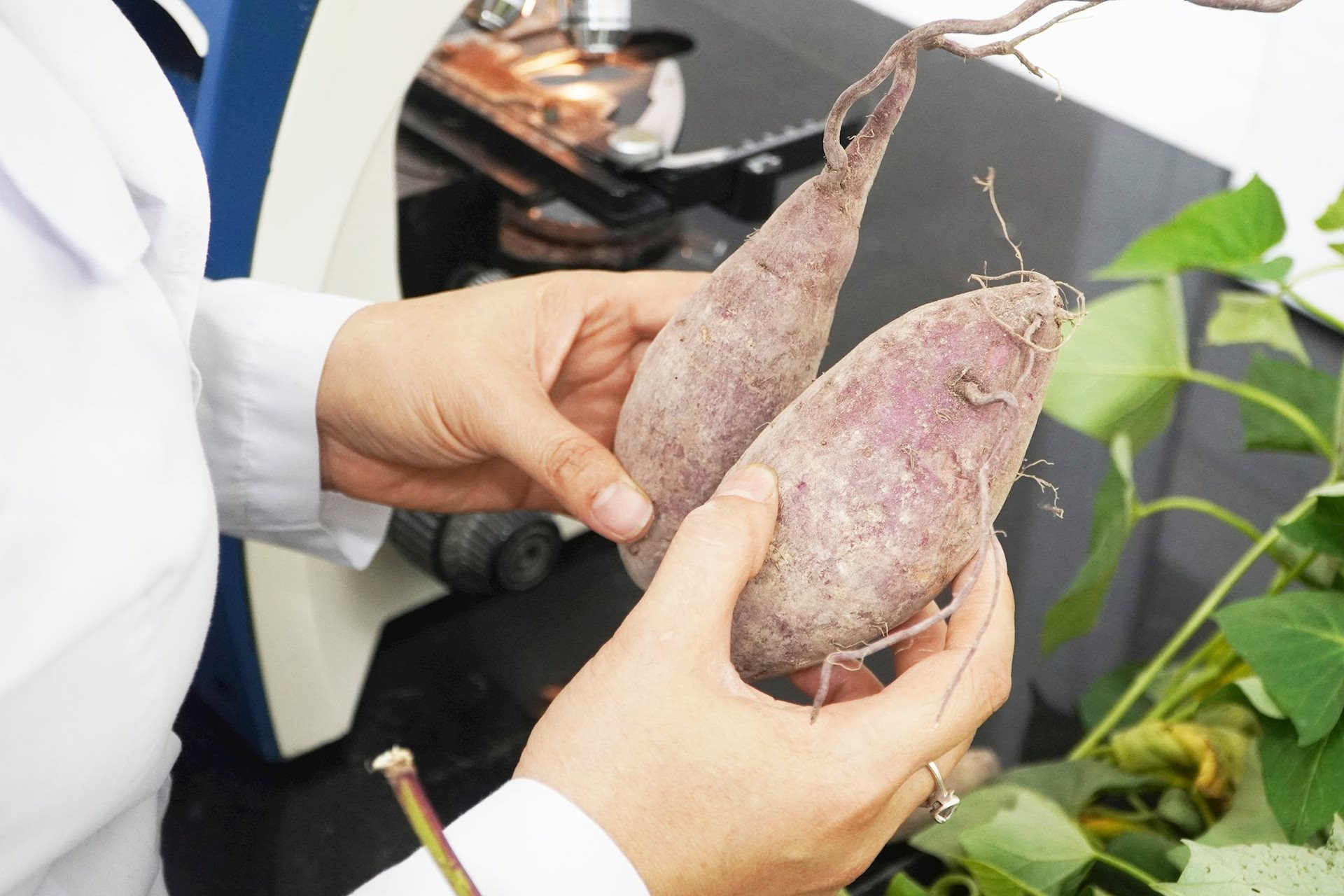
The research team advises farmers to use intangible energy sources on sweet potatoes in addition to physical ones like soil, water, and organic fertiliser.
This includes precise care techniques, such as treating the sweet potatoes like bonsais and giving them calming music to promote good vibes. As a result, the sweet potatoes will develop more effectively and yield more saponin than usual.
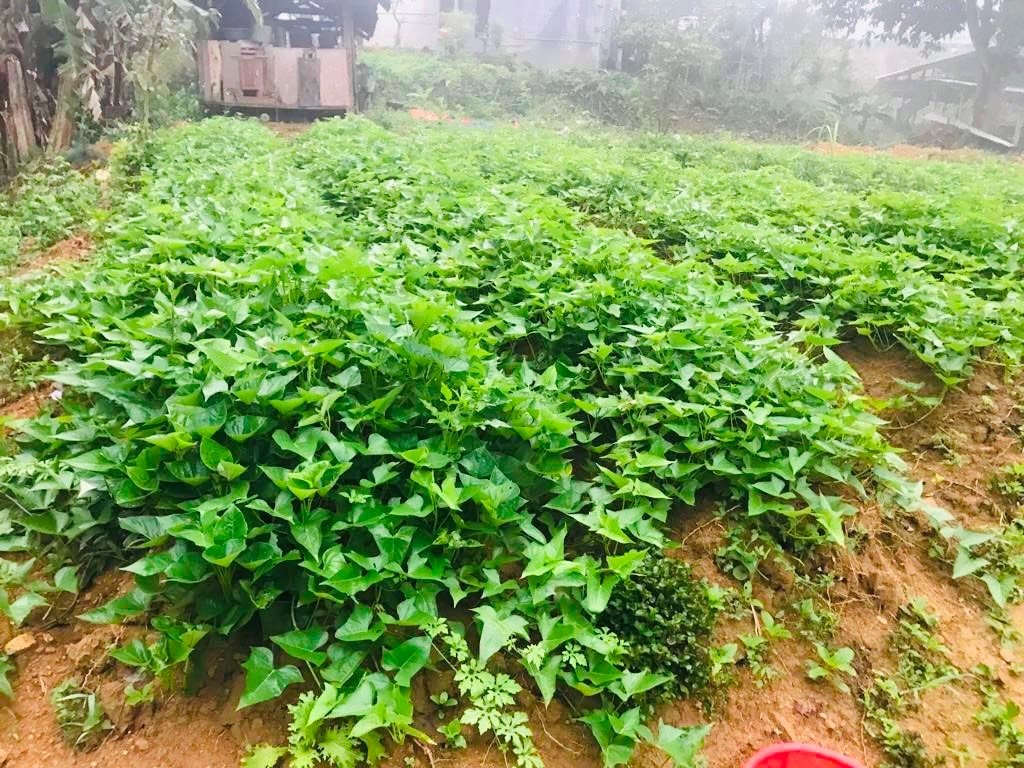
Currently, Sanh is assessing quality by providing samples to some customers and recording their feedback.
With the current price of these sweet potatoes at VND 55,000 per kilogramme, customers have highly praised their quality, noting that the sweet potatoes are fragrant, delicious, and have a distinctive taste compared to regular sweet potatoes.
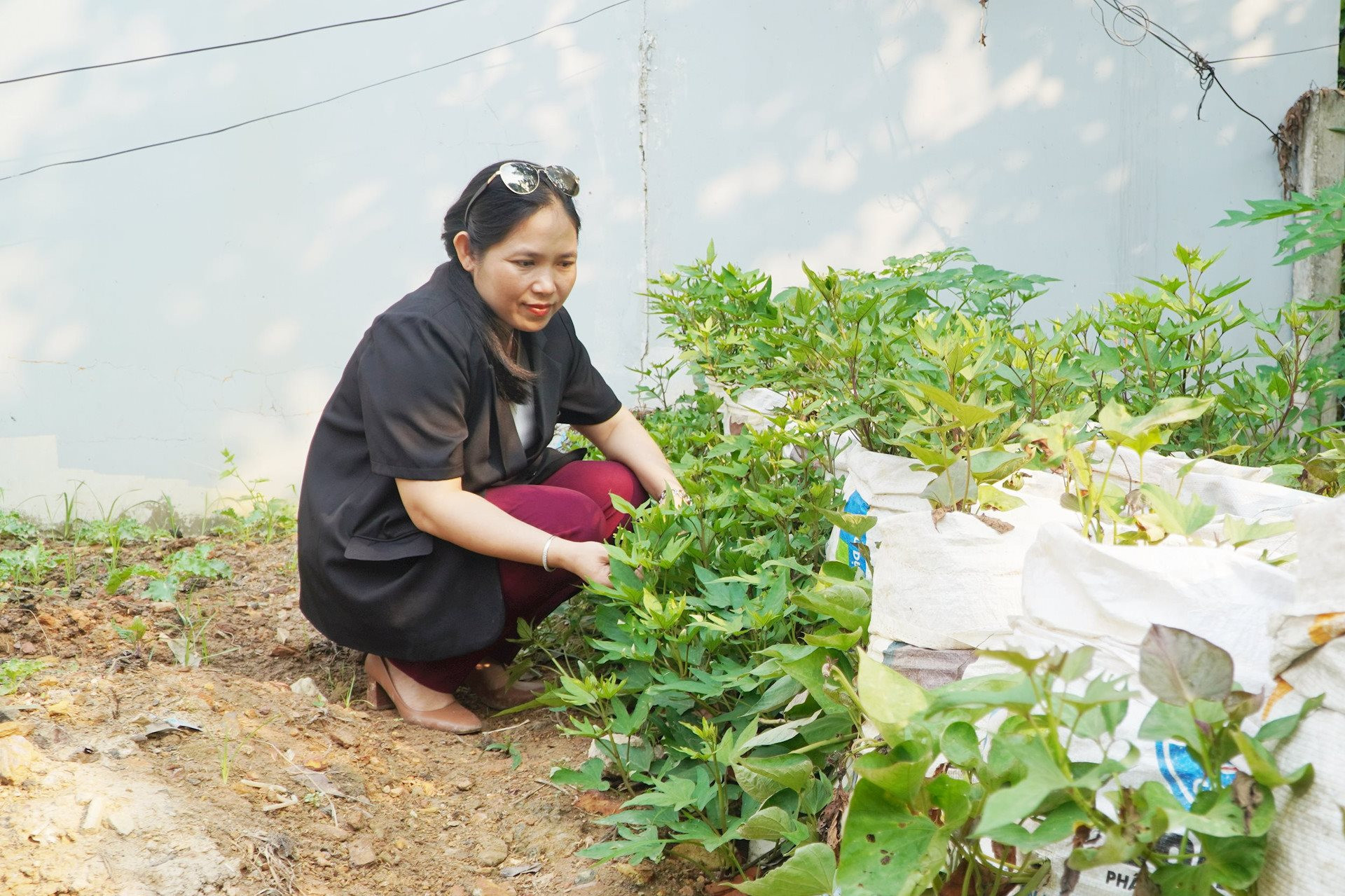
Sanh intends to purchase sweet potatoes from farmers in the near future, using the tubers and vines to make commercial products, possibly including snacks and diet foods, with the long-term objective of selling these goods abroad.
This approach is linked to sustainable development and the green transition because it does not utilise pesticides, so promoting the regeneration of clean soil and the shift to a circular economy.
For Sanh, the most crucial first step in developing production ties with farmers is to standardise the production process and identify the most productive sites for intensive farming.
The ultimate goal is to assist farmers in obtaining a high and consistent income from this unique sweet potato type.
